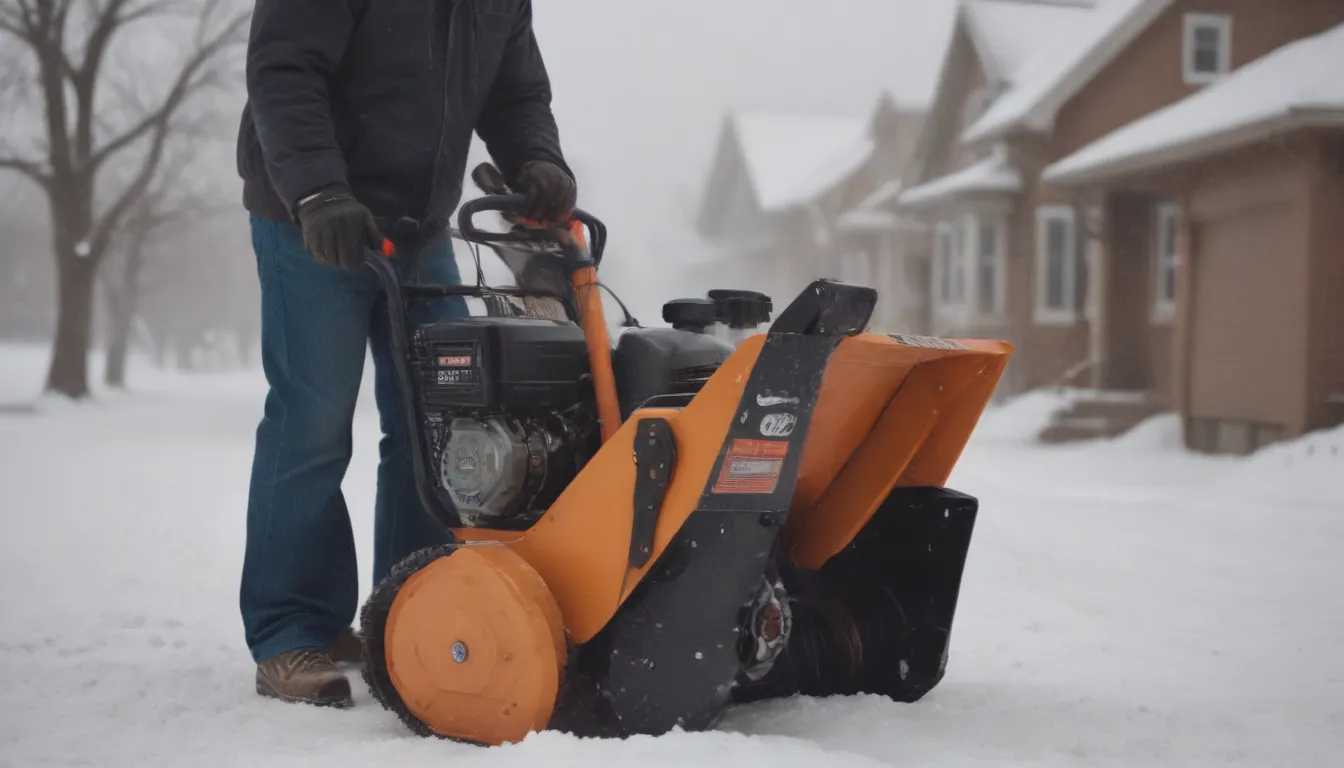How to Troubleshoot a Snow Blower That Won’t Start

Winter is here, and you’re faced with a gas snow blower that won’t start up. If you’re dealing with 12 inches of snow to clear and no desire to shovel it off your driveway, you’re not alone. Before you give up and consider taking your snow blower to a repair shop, let’s go through some troubleshooting tips that could save you time and hassle. By following a step-by-step process of elimination, you can work through common issues that may be preventing your snow blower from starting up. Remember, if you’re unsure about any of these steps or feel uncomfortable performing them, it’s always best to seek professional help.
1. Check the Fuel Tank
- Make sure your fuel tank isn’t empty and check the oil as well.
- Ensure the gas is not dirty or old, as this can cause starting issues.
- If the fuel has turned into a varnish-like coating in the carburetor, you’ll need to drain the system.
- Consider switching to an electric tool to avoid fuel-related issues.
2. Set the Fuel Shutoff Valve to “On”
- Check the position of the fuel shutoff valve switch and make sure it is set to “On.”
- This simple step may solve your starting problem if the switch was accidentally left in the “Off” position.
3. Check the Safety Key Switch
- Some snow blowers have a safety key switch that must be properly inserted.
- Make sure the red toggle switch is in the RUN position before attempting to start the engine.
- Failure to check these switches may result in starting issues or even engine flooding.
4. Try Starting in “Full Choke Mode”
- For a cold engine, use FULL CHOKE mode to start up your snow blower.
- Consider skipping priming the carburetor if the temperature is above freezing to prevent engine flooding.
5. Check Throttle Position
- Confirm that the throttle on your snow blower is set to three-quarters speed or higher before starting the engine.
6. Examine the Spark Plug
- If the engine still won’t start, remove and inspect the spark plug for issues.
- Look for wetness, incorrect gap, or cracking, which may indicate a problem.
- Test the spark plug and ignition coil if necessary before attempting to start the engine again.
7. Check the Starter
- If all else fails, the issue may lie with the starter.
- Electric-start engines may require the starter to be replaced if it is faulty.
- If your snow blower still won’t start after following these steps, seek professional servicing or consider buying a new one.
Remember, signs of a clogged carburetor on a snow blower include starting then dying shortly after, jerking, sputtering noises, and black smoke coming from the exhaust. By following these troubleshooting tips, you can hopefully identify and resolve the issues preventing your snow blower from starting up effectively and efficiently.
In conclusion, troubleshooting a snow blower that won’t start can be a simple process of elimination. By checking common issues such as the fuel tank, switches, throttle, spark plug, and starter, you can often pinpoint the problem and get your snow blower running smoothly again. If all else fails, don’t hesitate to seek professional help to ensure your snow blower is in optimal working condition for the winter season.





